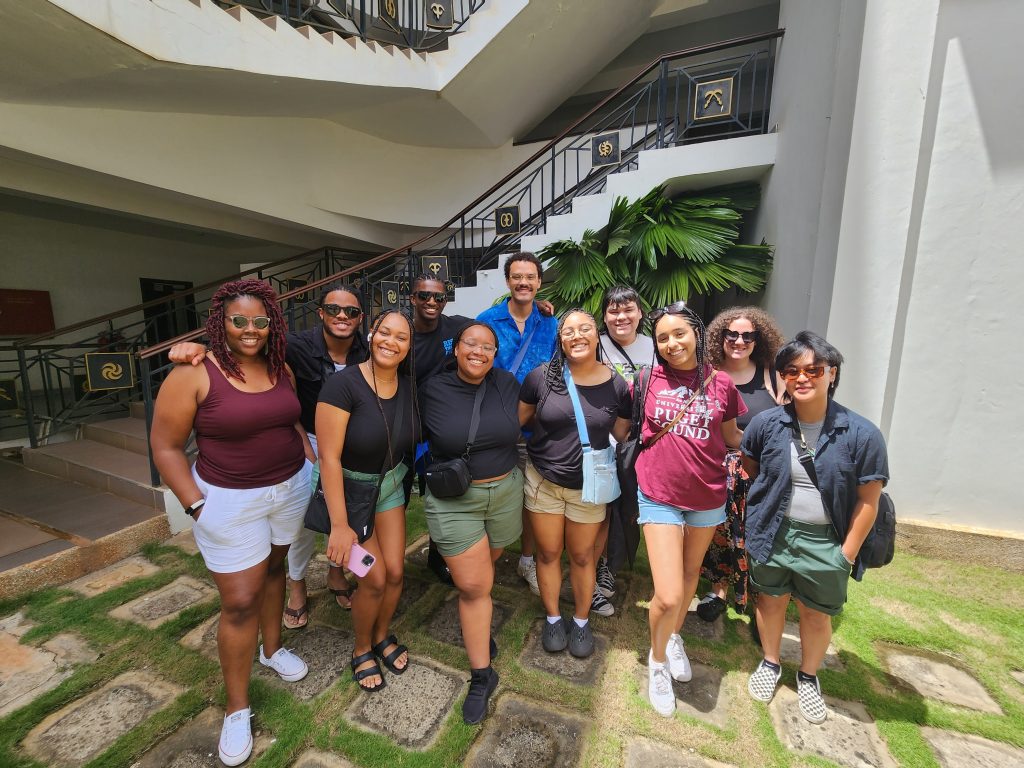My Ghana Journey: with Rebecca Levine ’24
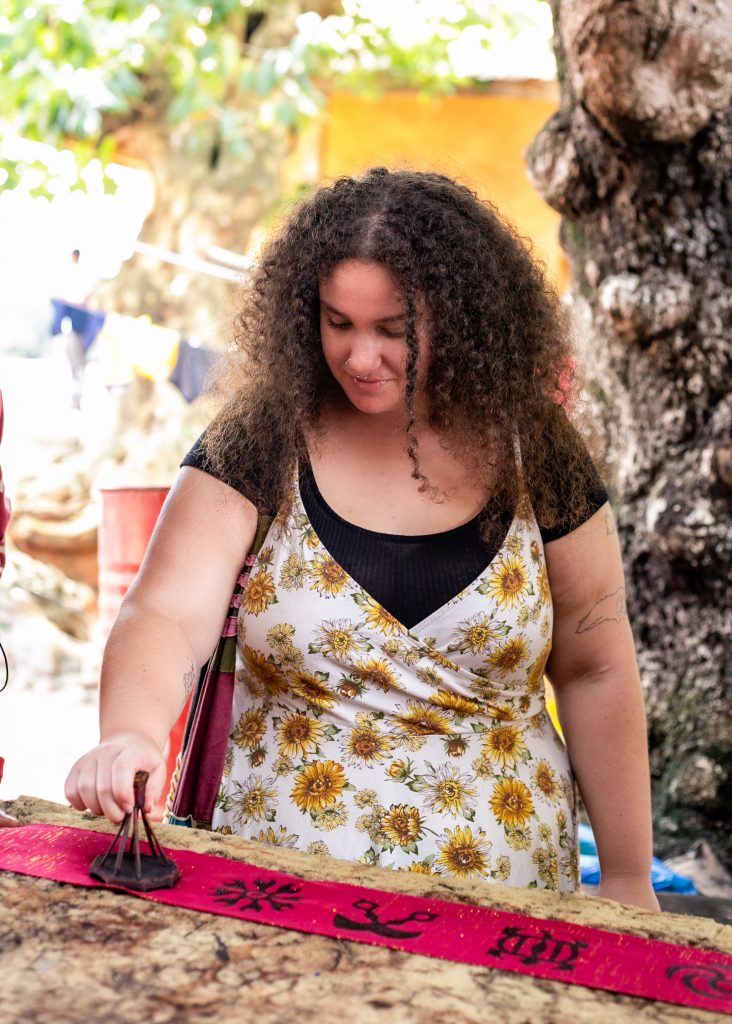
My experience studying abroad in Ghana has been educational, impactful, and fun. At the start of our journey I had a lot of knowledge going in because of our class but I still did not know exactly what to expect. In fact, I tried to have no expectations and to be as open to the experience as possible. Through our many excursions and weekend trips, my internship, and bonding with our group, I have gained new insights about myself, Ghana, and the United States.
When we first arrived at the Accra airport we could immediately feel the heat and humidity that we were told so many times about, but we were ready to grow accustomed to it. On the drive to our hotel we got our first glimpse of the beautiful nature that the country has to offer. The luscious greenery and tall palm trees were amazing to see. We toured the campus at the University of Ghana, Legon and received introductions about our month-long stay. Here we were able to talk to other international students who were at the end of their month-long journey and received a lot of great advice about things to do and sights to see. Once we settled into our apartments there was definitely an adjustment period of getting to know the city and getting used to the differences compared to our life in America. Some of these include; being approached by hawkers who are business people that sell items on the roadsides for passing cars, not being able to use the tap water, and new cuisine.
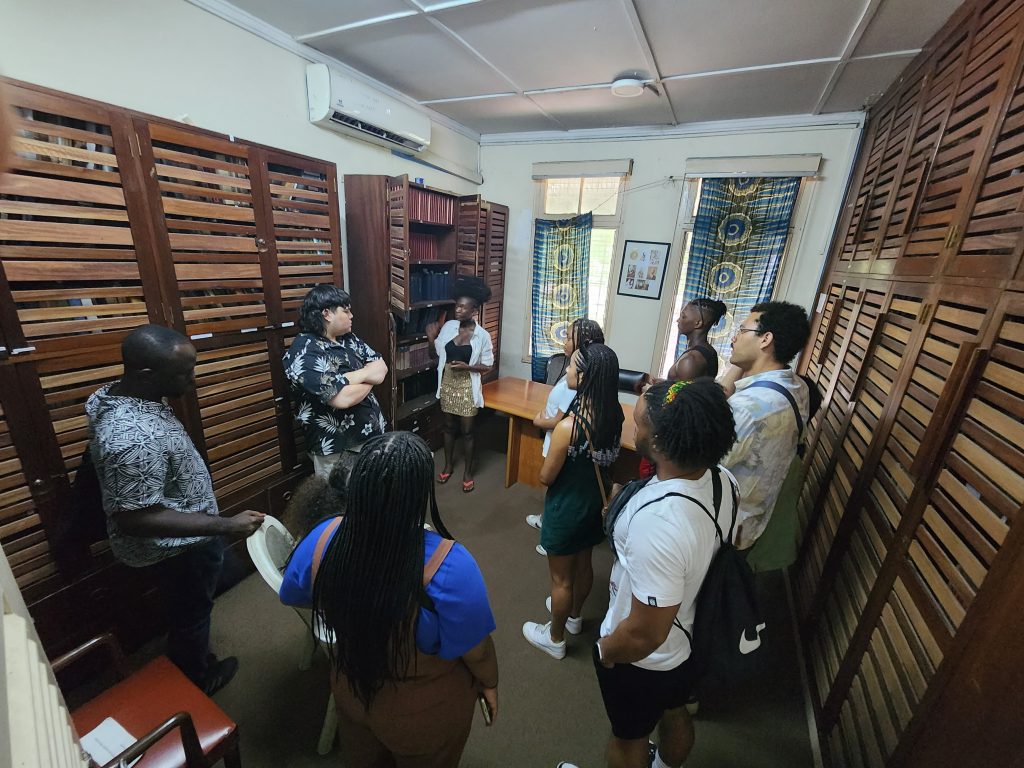
Our first weekend excursions consisted of a few adventures, the first of which being a visit to the W.E.B. DuBois museum. This was very fascinating because it was inside of the house that he lived and died in. It was surreal being able to see his written works and the place where he wrote after reading his books in previous classes and learning about his legacy. We then visited Black Star Square which is a monument to Ghana’s independence from Great Britain which they achieved in 1957. The Black Star is featured on the flag of Ghana and signifies freedom and unity against colonialism.
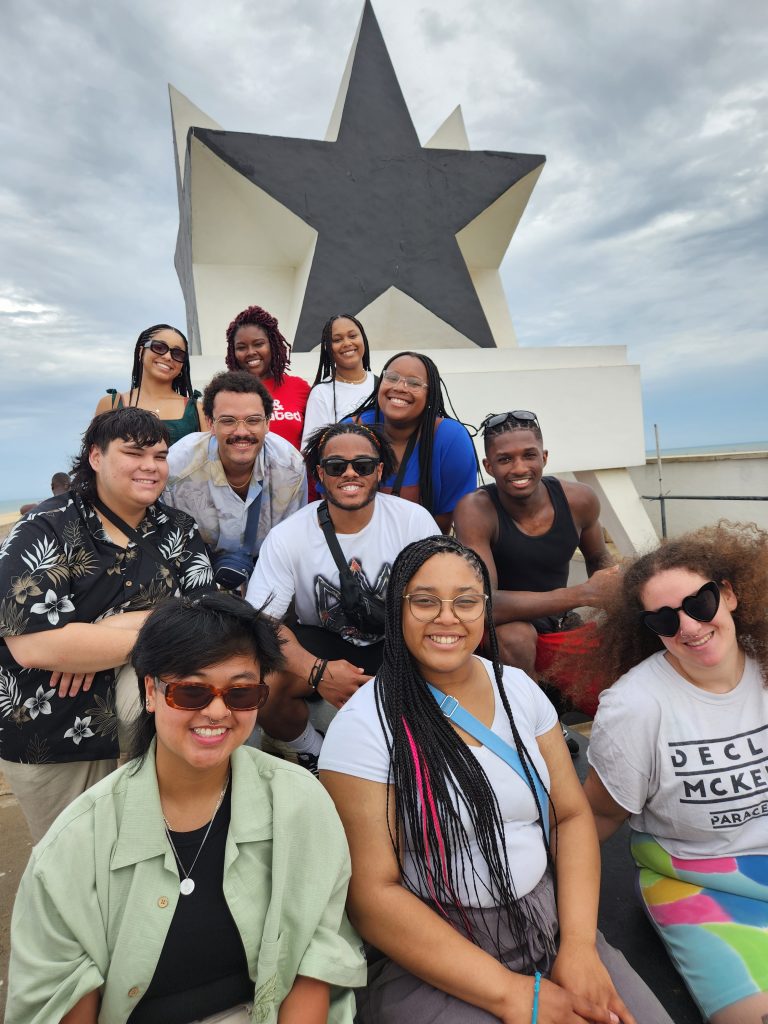
The following week we started our internships, mine being a teacher’s assistant at The Flobar School which is a private school that encompasses nursery to 12th grade. I was working in the upper nursery which was kindergartners and pre-k children. I interned there for three weeks and developed amazing relationships with the teachers and students. The job was incredibly tiring and I always came home exhausted but I learned so much and had so much fun that it was all worth it in the end. The teachers that I worked with, named Auntie Eva and Auntie Pat were so supportive and welcoming to me and I am going to miss them so much when we leave. In Ghana all teachers are called Auntie or Uncle so the kids called me Auntie Becky. In Ghana the kids learn a lot more early on than in America, for example the 4 year olds were already writing sentences and doing subtraction. It was amazing to see this and help with their learning process. I am going to miss singing and dancing with them, helping them with their work, teaching lessons, and getting to know them. This was one of my favorite experiences of the trip.
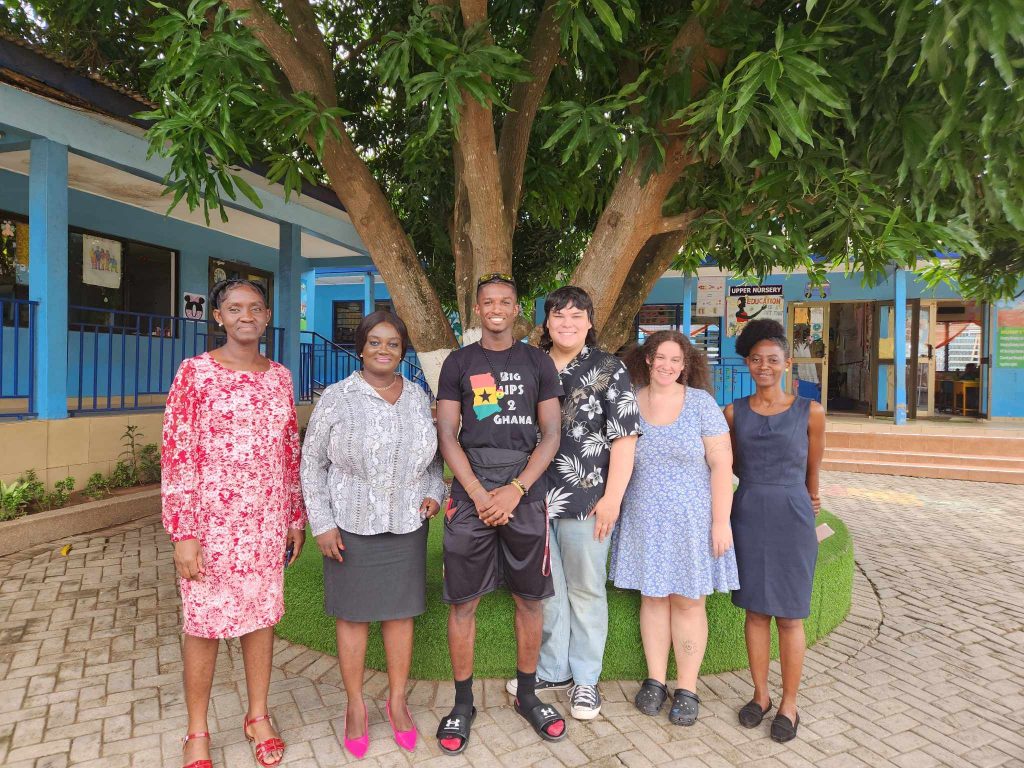
Our next weekend trip was to Cape Coast where we visited the Cape Coast and Elmina Slave castles and dungeons. This was a very emotional trip with so many thoughts and conversations to be had. Physically being inside the dungeons where the enslaved Africans were held before being brought to America was a deeply harrowing experience. We could feel the heat radiating off the walls and see how dark it was in there while hearing from the tour guides about the horrible conditions these people were kept in not knowing when or what was coming next. As an African American Studies major who has learned about slavery and read about this topic in vivid detail, nothing compares to standing in the place where these atrocities were committed. This experience was definitely something that I will be continuing to think about and process for a long time and hopefully be able to share with folks back home, especially those less educated about the transatlantic slave trade.
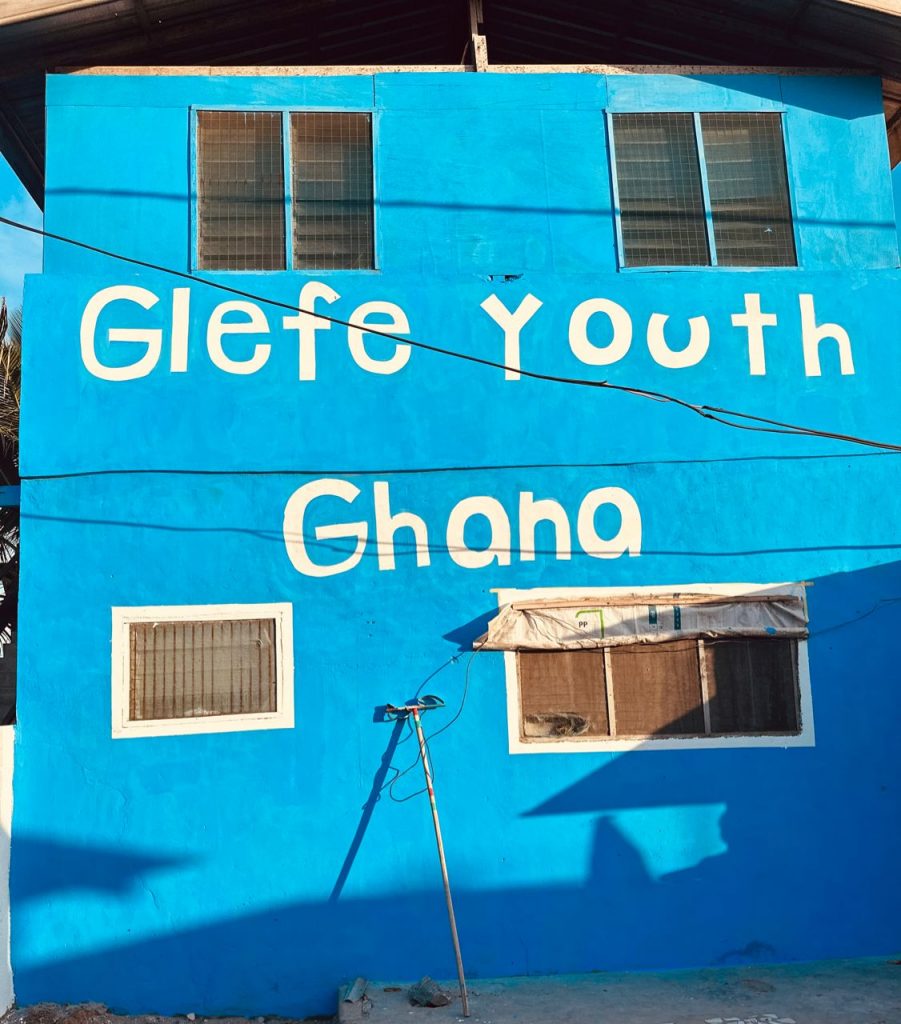
Another powerful experience was when we did our day of service at the Glefe Youth Center. This center is an after-school program for kids in a village outside of Accra who lack the same resources as those in the city. Our professor, Dr. LaToya Brackett, has been working with this organization for years and has developed a close relationship with the founder, Ishmael Hammond. During our day of service we sanded and painted the walls inside and outside of the building as well as helped the kids with their homework once they arrived after school. It was so amazing to see how impactful this place is for the kids and the people volunteering there as well as how far it has come since its founding in 2012.
The following weekend we toured the Tetteh Quarshie Cocoa Farm and were able to see the process of how cocoa is harvested and fermented. This was very fun as I was able to harvest a cocoa plant using the traditional tool and we were able to eat the fruit that surrounds the seeds inside the pod. Cocoa is a large part of Ghana’s economy and one of the most important natural resources so it was great to be able to visit the first cocoa farm in Ghana which was planted in 1879.
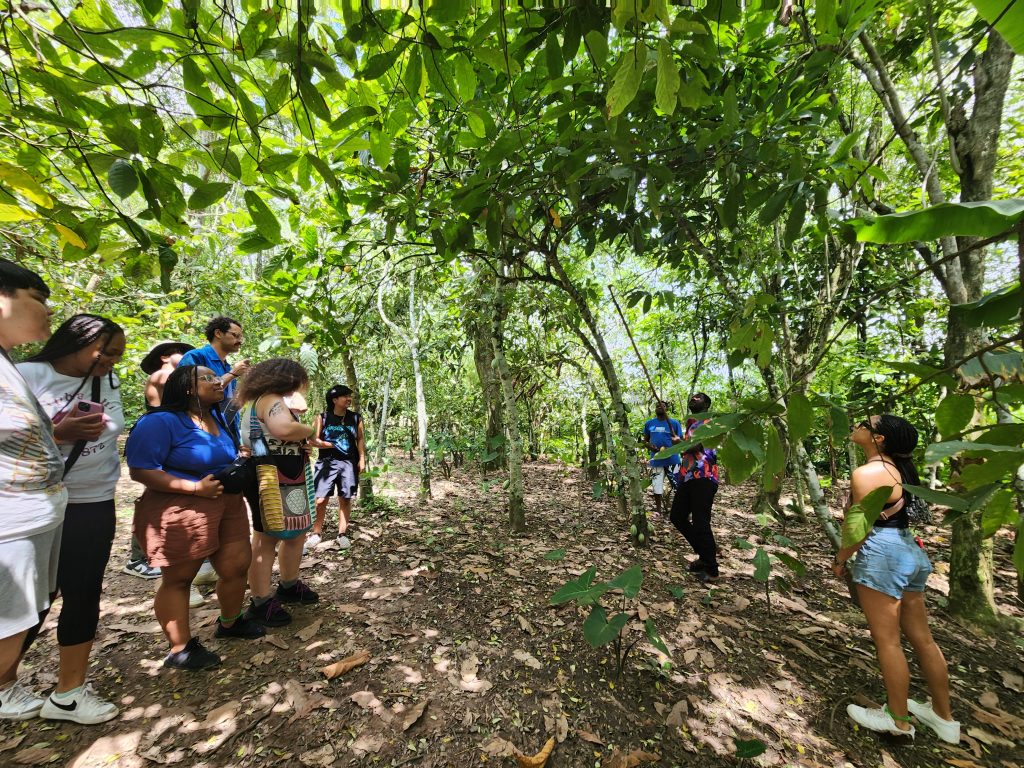
The weekend after that we visited the city of Kumasi which is about 5 hours north of Accra. There we were able to tour the Manhyia Palace Museum which houses the chief/king of the Asante Region. This museum was one of my favorite parts of the trip because I learned so much about the culture and history of the chieftaincy of the region. Inside there were wax figures of past kings and queen mothers as well as original furniture and appliances from the 1920’s when the palace was built. We also visited an Adinkra stamping location where we learned about the process of making dye from tree bark, the meaning of the symbols that are stamped onto cloth, and got to create our own cloth with symbols of our choosing. Next we visited a Kente weaving facility where we got to see and try our hand at hand-weaving Kente cloth which is an important textile in Ghana.
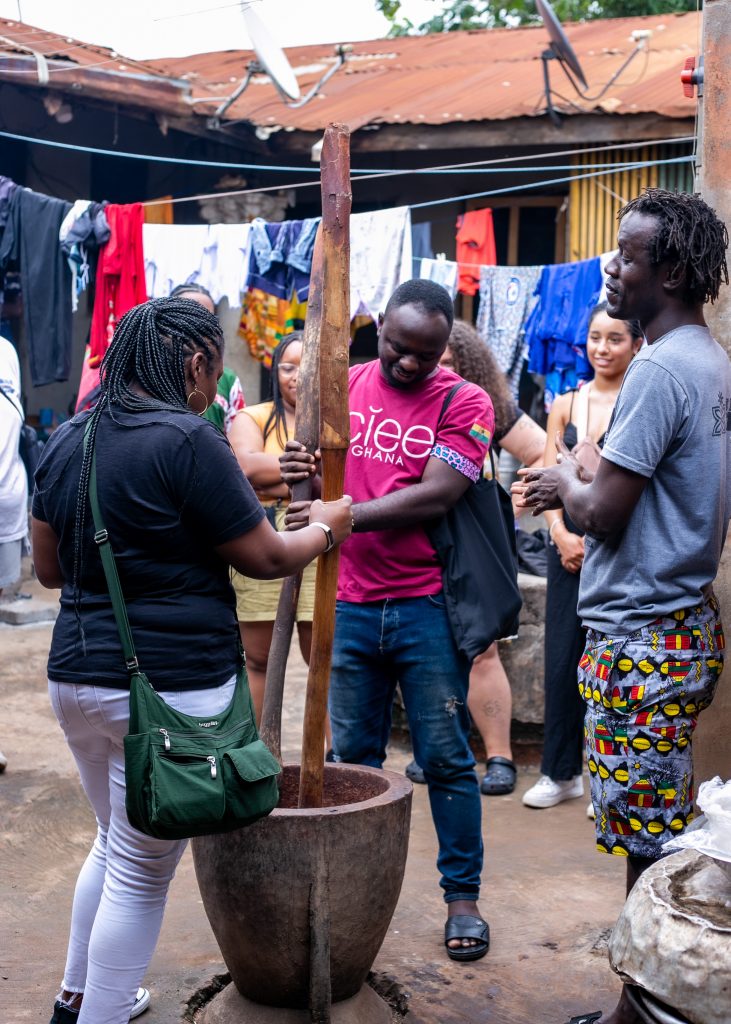
As we close out our time in Ghana I recognize my struggles as well as the amazing learning opportunities I have had. I encountered several health problems during my stay here but with the help and support of Dr. Brackett and my peers, I have come out the other side stronger than ever. Another great part of this trip was meeting and getting to know our CIEE guide Mike Adu Ampofo who has been a tremendous help and has grown to be a trusted friend. We learned so much about the intricacies of Ghanaian culture from him and are so grateful to have had his guidance. While we all were not sure what to expect when traveling across the world to a continent none of us besides Dr. Brackett had been to, we certainly feel a connection to Ghana and Africa as a whole and have learned and experienced many new things that we will remember for the rest of our lives.
